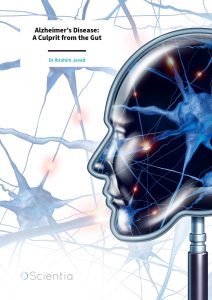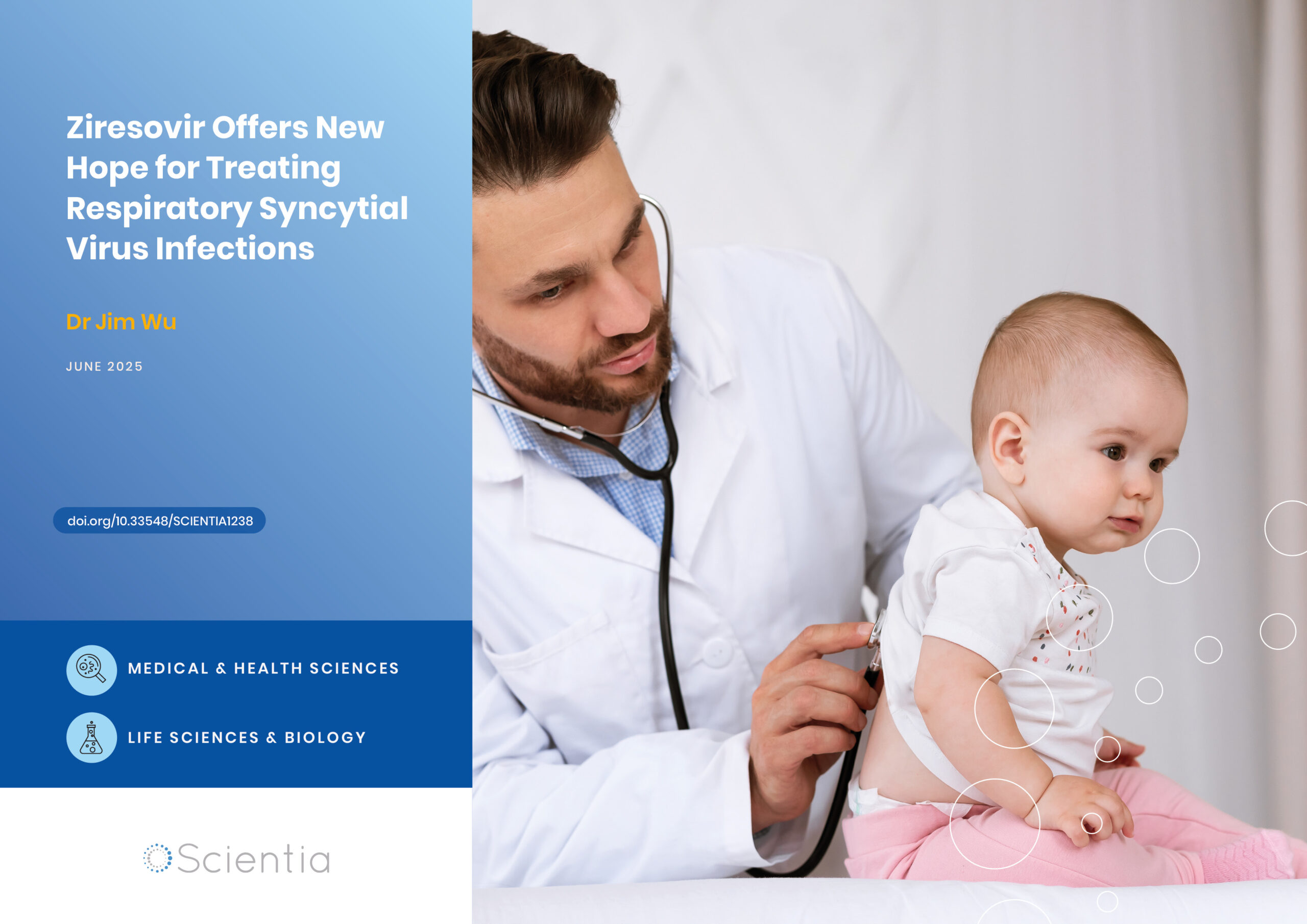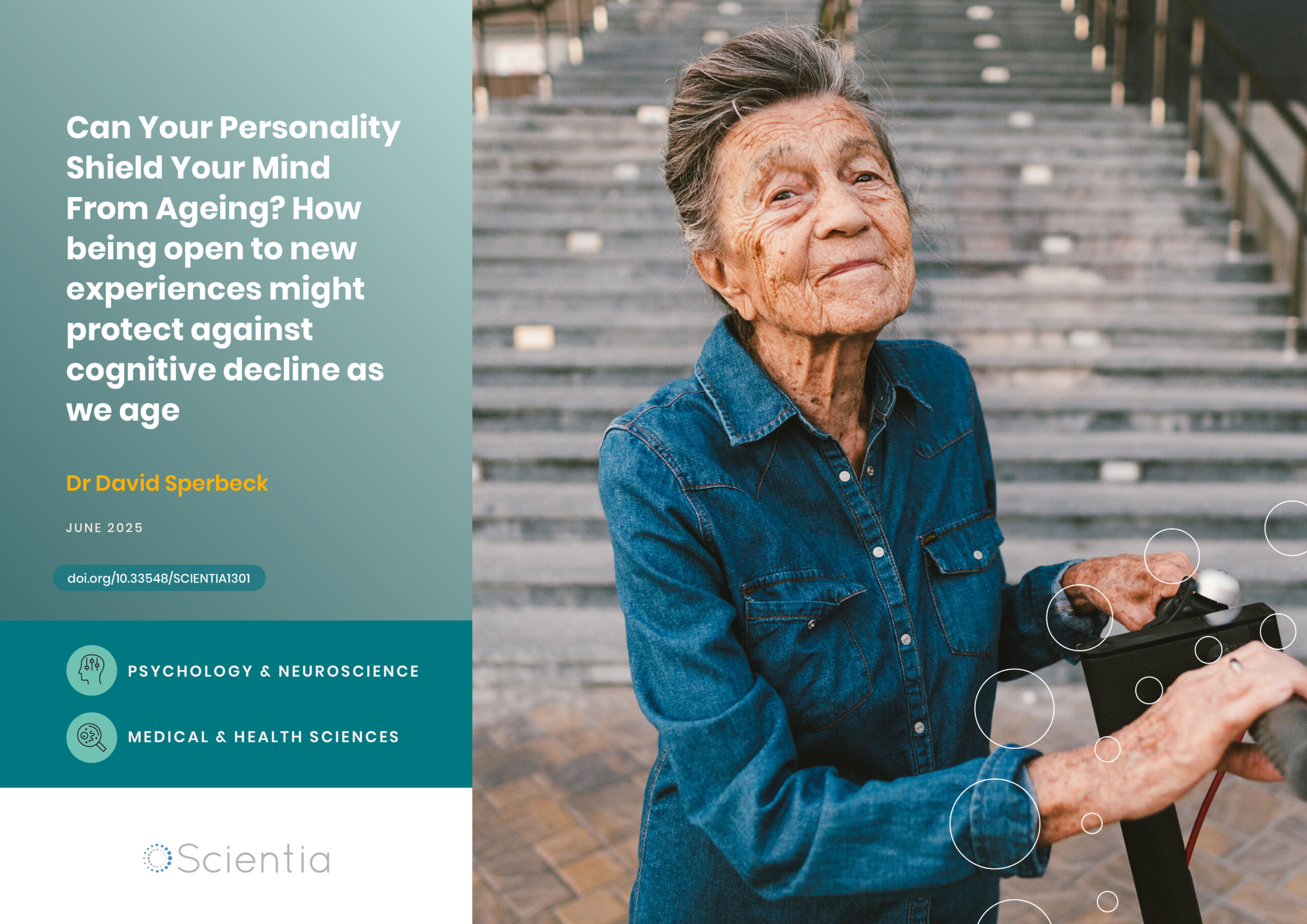Dr Ibrahim Javed | Alzheimer’s Disease: A Culprit from the Gut
Alzheimer’s disease is a form of dementia that affects memory and thinking, and worsens over time. Sadly, it is currently without a cure. Dr Ibrahim Javed from the University of South Australia researches the potential causes of the disease and how it progresses with time, with the aim of developing better treatments. His research focuses on the gut-brain axis, particularly the link between gut bacteria and Alzheimer’s disease, and the fascinating interplay of a molecule called amyloid-ß.
The Impact of Alzheimer’s Disease
Alzheimer’s disease (AD) is the most common form of dementia, thought to cause around 60% to 70% of all cases and impacting senior citizens – who are valuable assets to every society. According to the World Health Organization, dementia is the 7th leading cause of death and one of the main causes of disability and dependency in older people around the world. In 2019 alone, dementia cost global economies 1.3 trillion US dollars, with around half that value attributed to care provided by family and close friends. By affecting a person’s thinking and memory, AD impacts the ability to perform day-to-day activities, including self-care. It is a neurodegenerative disease, causing damage to the brain over time and, consequently, a loss of function. Although some treatments are available to help slow the progression and avail a few more years of life, there are currently no cures.
The build-up of a protein fragment (or peptide) called amyloid-beta (amyloid-ß) has been widely recognised as an indicative marker of AD. This molecule accumulates on nerve cells in the brain, forming plaques that disrupt cell communication and eventually contribute to their death. Some treatments are undergoing clinical trials that target and reduce amyloid-ß in the brain, but there is still much to understand about this protein fragment.
Dr Ibrahim Javed carries out research at the Clinical and Health Sciences Unit at the University of South Australia and the Australian Institute for Bioengineering and Nanotechnology at The University of Queensland. Along with his team, he aims to find out more about amyloid-ß and its link to gut bacteria and, in particular, better understand the roles of this molecule within the body. This will help us understand why this molecule which leads to AD, is produced in the body and why it makes plaques. His team has discovered potential targets for new AD medicines and novel anti-infectives.
The Gut-Brain Axis
Dr Javed explains that the gut microbiome, the delicate balance of microorganisms that are found in the human digestive system, is essential for regulating processes in the body and can also play a role in the development of a wide range of disorders, such as inflammation, obesity, depression, cancer, and dementia and dictate the quality of ageing. His research explores the gut-brain axis, which is a two-way communication between these two parts of the body using biochemical molecules, with a particular focus on the role and impact of gut bacteria in this communication. He adds that there is a link between the metabolites (products of metabolism) of the gut microbiome and AD, where these specific metabolites serve as a language of crosstalk between the gut and the brain. Understanding this communication can highlight new targets for potential treatments.
In his earlier work, Dr Javed examined the aggregation and toxicity of amyloid-ß, which has been seeded by FapC amyloid fragments (FapCS). These are fragments of proteins produced by a particular type of bacteria which can infect the gut, called Pseudomonas aeruginosa. He says that the FapCS showed favourable binding with amyloid-ß and a capacity to speed up (catalyse) the beginnings (or seeding) of amyloidosis, the abnormal build-up of amyloid-ß associated with AD. He was able to determine the complex structural changes occurring within the molecules, offering the first concrete evidence for the process, thereby bridging the knowledge gap in understanding the catalytic role of infectious bacteria promoting the development of amyloid-ß plaques. Dr Javed suggests this could be used as a potential therapeutic target, but there is still more to learn about the role of amyloid-ß in the body.
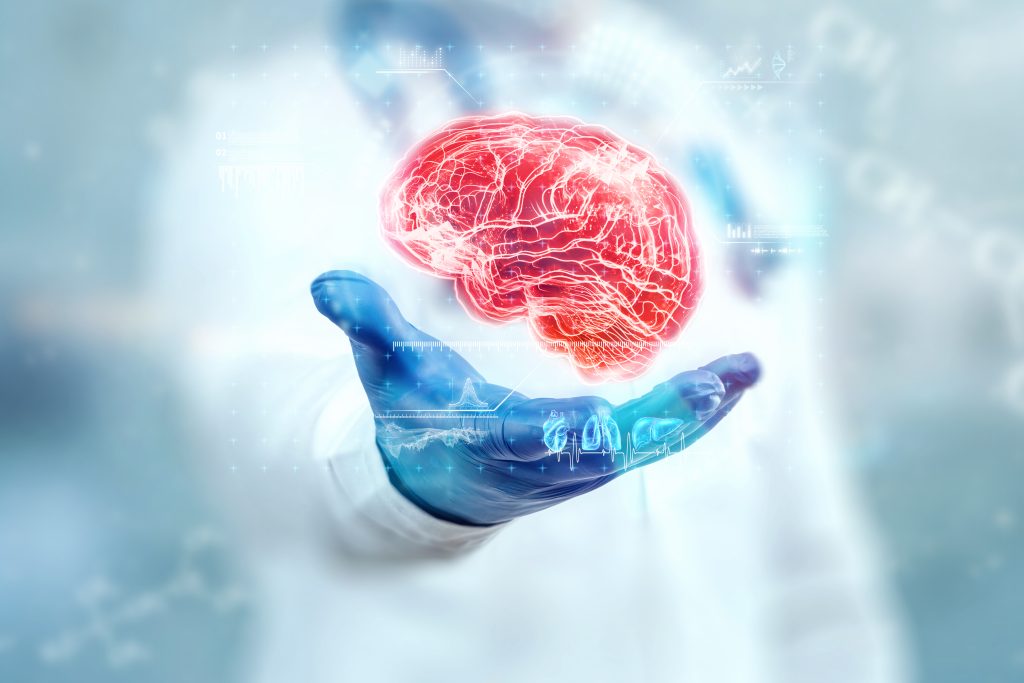
Amyloid-ß in the Gut
Dr Javed and his colleagues continued to investigate amyloid-ß, noting that this peptide has also been found in the intestinal tissues of AD patients as well as animal models of this disease. Although the build-up of amyloid-ß and the formation of plaques in the brain is linked to dementia, its presence in the gut tissue implies that it must have some kind of function here. Dr Javed stresses that it is necessary to fully investigate the physiological roles of the peptide to determine if it provides any benefits. He suggests that potentially, only the aggregated form that creates the plaques in the brain is detrimental, whereas the other form, amyloid-ß monomers (the smaller molecules which link together to form a peptide or eventually a much larger protein molecule), found elsewhere, have a vital role in the body.
The team carried out an in-vivo investigation with zebrafish, using live imaging to observe amyloid-ß diffuse into the vasculatures and tissues. They found that it localised with FapC or CsgA fibrils that had been injected into the tail muscles of the fish. FapC and CsgA fibrils are proteins produced by the infectious bacteria Pseudomonas aeruginosa and Escherichia coli, which are opportunistic gut pathogens. Dr Javed adds that after amyloid-ß treatment, the FapC aggregates produced, while toxic to particular types of neuronal cells (SH-SY5Y), were, in fact, non-toxic to intestinal cells (Caco-2). After interacting with amyloid-ß, which resulted in remodelling of the microbial fibril protein structure, these molecules then lost their function. The microbial fibrils could no longer adhere to the intestinal Caco-2 cells, and the amyloid-ß also dissolved and detached the microbial fibrils already attached to the intestinal cell membrane.
Pathing the Way for Novel Treatments
Dr Javed’s study indicates that amyloid-ß monomers have an anti-biofilm role since they target and disintegrate microbial fibrils of FapC and CsgA formed by the opportunistic gut pathogens Pseudomonas aeruginosa and Escherichia coli. Biofilms are protective castles formed by microbial colonies, which are hard to remove and also difficult for anti-infectives to penetrate, so the ability to disrupt or prevent the formation of these is an extremely useful weapon against fighting infections. He adds that amyloid-ß can be nature’s way of dealing with microbial biofilms and infections in the body, which could lead to the development of new biomimetic anti-infectives. This is particularly good news as Pseudomonas aeruginosa is listed as a priority pathogen by the World Health Organization as a type of bacteria posing significant threat to health due to the emergence of anti-infective resistant strains.
Dr Javed and his colleagues have shed a bright light on the complex and varied nature of amyloid-ß, and their research offers a potential explanation of the role of amyloid-ß in the gut-brain axis. Dr Javed explains that armed with a deeper understanding of amyloid-ß, their findings could also help aid the future development of new medicines to treat AD.
SHARE
DOWNLOAD E-BOOK
REFERENCE
https://doi.org/10.33548/SCIENTIA984
MEET THE RESEARCHER

Dr Ibrahim Javed
Clinical and Health Sciences
University of South Australia
Australian Institute for Bioengineering and Nanotechnology
The University of Queensland
Australia
Dr Ibrahim Javed obtained his PhD degree in Pharmacy and Pharmaceutical Sciences at Monash University in Australia. He is currently a National Health and Medical Research Council Emerging Leadership Fellow and Senior Lecturer at the University of South Australia’s Clinical and Health Sciences Unit, and a joint research fellow at The University of Queensland’s Australian Institute for Bioengineering and Nanotechnology. He also serves as an editorial board member for the journal Nature Communication Biology. Dr Javed’s research centres around nanomedicine and the gut-brain axis, exploring the link between infectious microorganisms in the gut and neurodegenerative diseases. Throughout his well-published career, he has received several awards, including a Travel Fellowship for the 29th Federation of Asian and Oceanian Biochemists and Molecular Biologists Conference in 2022, and the Most Significant CBNS Publication Award from the Australian Research Council Centre of Excellence in Convergent Bio-Nano Science and Technology in 2019.
CONTACT
E: i.javed@uq.edu.au
W: aibn.uq.edu.au/profile/6792/ibrahim-javed
KEY COLLABORATORS
Professor Daniel Erik Otzen, Aarhus University, Denmark
FUNDING
National Health and Medical Research Council Investigator Grant 2009991_JAVED
FURTHER READING
SA Ali, K Chung, H Forgham, et al., Alzheimer’s progenitor Amyloid-β targets and dissolves microbial amyloids and impairs biofilm function, Advanced Science, 2023, 10(29), e2301423. DOI: https://doi.org/10.1002/advs.202301423
I Javed, Z Zhang, J Adamcik, et al., Accelerated Amyloid Beta Pathogenesis by Bacterial Amyloid FapC, Advanced Science, 2020, 7(18), 2001299. DOI: https://doi.org/10.1002/advs.202001299
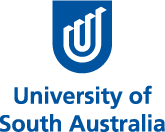
REPUBLISH OUR ARTICLES
We encourage all formats of sharing and republishing of our articles. Whether you want to host on your website, publication or blog, we welcome this. Find out more
Creative Commons Licence (CC BY 4.0)
This work is licensed under a Creative Commons Attribution 4.0 International License. 
What does this mean?
Share: You can copy and redistribute the material in any medium or format
Adapt: You can change, and build upon the material for any purpose, even commercially.
Credit: You must give appropriate credit, provide a link to the license, and indicate if changes were made.
SUBSCRIBE NOW
Follow Us
MORE ARTICLES YOU MAY LIKE
How Food Environments Shape Our Eating Habits
How we eat dramatically impacts our health, yet millions of Americans live in ‘food deserts’ – areas with limited access to fresh, nutritious food. Recent research reveals that solving this crisis requires looking beyond just physical access to food to understand how our entire community environment shapes our dietary choices. Through a series of pioneering studies, Dr Terrence Thomas and colleagues at North Carolina A&T State University have been investigating how different aspects of our food environment influence what we put on our plates. Their findings suggest that creating lasting change requires reimagining how communities engage with food at every level.
Dr Jim Wu | Ziresovir Offers New Hope for Treating Respiratory Syncytial Virus Infections
Respiratory syncytial virus (RSV) causes respiratory tract infections in children and adults. While for many patients the outcomes of infection are mild, for others, infection can prove fatal, and there is a lack of effective treatments. Dr Jim Wu from the Shanghai Ark Biopharmaceutical Company in China carries out his vital research to develop new, safe, and effective treatments to tackle this killer.
Dr Sandra Grumelli | The Importance of the Choline in Chronic Lung Infections
People with chronic lung conditions like COPD and cystic fibrosis are vulnerable to lung infections caused by the bacterium Pseudomonas aeruginosa. These infections are often difficult to treat and can cause sudden worsening of symptoms, known as flare-ups or acute exacerbations. While we know P. aeruginosa triggers inflammation and damage in the lungs, much less is understood about how exactly it causes these flare-ups, or how it survives in such a harsh environment. Dr Sandra Grumelli from the Center of Investigations of Respiratory Diseases in Argentina, has explored the role of a common molecule called choline which is released during infection. Using a combination of mouse models and laboratory experiments, she has discovered that choline not only makes breathing harder, it also helps P. aeruginosa adapt to and persist in the lungs. Her research opens up new possibilities for tackling chronic infections by targeting the bacteria’s energy use and the way it responds to its environment.
Can Your Personality Shield Your Mind From Ageing? How being open to new experiences might protect against cognitive decline as we age
Many of us have witnessed the troubling effects of ageing on the mind in older friends or family members – the forgotten names, the misplaced keys, the struggle to solve problems that once seemed simple. For decades, scientists have accepted cognitive decline as an inevitable part of growing older. But what if our personality could protect us from some of these changes? A remarkable 25-year study by Dr David Sperbeck, a neuropsychologist at North Star Behavioral Health Hospital in Alaska, has uncovered compelling evidence that certain personality traits might act as a shield against age-related cognitive decline.

